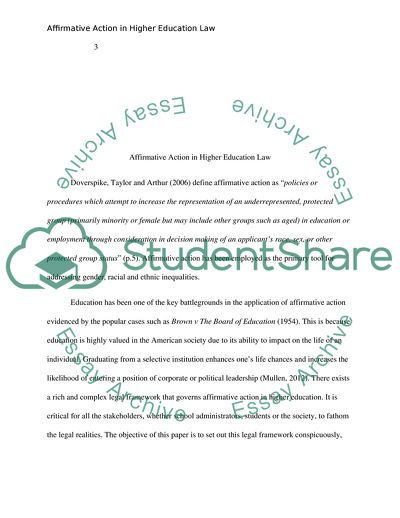Cite this document
(Affirmative Action in Higher Education Law Report Example | Topics and Well Written Essays - 2500 words - 1, n.d.)
Affirmative Action in Higher Education Law Report Example | Topics and Well Written Essays - 2500 words - 1. https://studentshare.org/law/1804899-law-in-higher-education-affirmative-action-in-higher-education
Affirmative Action in Higher Education Law Report Example | Topics and Well Written Essays - 2500 words - 1. https://studentshare.org/law/1804899-law-in-higher-education-affirmative-action-in-higher-education
(Affirmative Action in Higher Education Law Report Example | Topics and Well Written Essays - 2500 Words - 1)
Affirmative Action in Higher Education Law Report Example | Topics and Well Written Essays - 2500 Words - 1. https://studentshare.org/law/1804899-law-in-higher-education-affirmative-action-in-higher-education.
Affirmative Action in Higher Education Law Report Example | Topics and Well Written Essays - 2500 Words - 1. https://studentshare.org/law/1804899-law-in-higher-education-affirmative-action-in-higher-education.
“Affirmative Action in Higher Education Law Report Example | Topics and Well Written Essays - 2500 Words - 1”. https://studentshare.org/law/1804899-law-in-higher-education-affirmative-action-in-higher-education.


